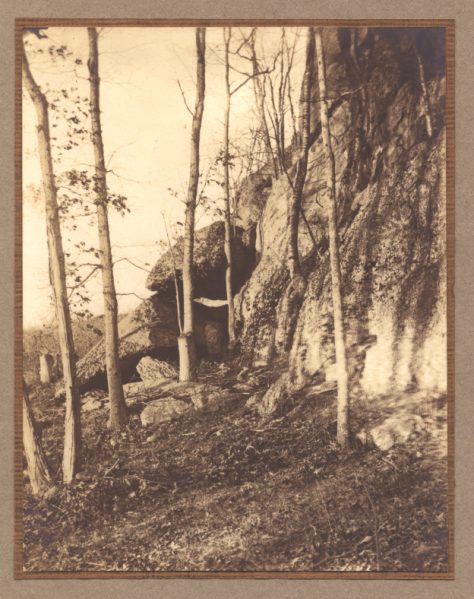Abram's Rock
by Professor Paul Cote, for his annual "Abram's Rock Walk"

Swansea has many rocks which are named and have legends told about them. A legend is a story repeated long enough to be passed on for more than a generation. The most familiar legend surrounding any of Swansea's rocks is the legend of Abram's Rock. The legend of Abram's Rock has been passed on for more than three-hundred years.
Who was Abram? It is believed he was an Indian who wished to give up his traditional ways and take up the culture of the English. Abram is not a Native American name. But at the onset of King Philip's War there were fourteen “Praying Towns” in New England. Praying Towns were established by the Puritan leaders of Massachusetts. These were places where Indian families could become Christians and live in peace. It was common for Indians who became baptized to take on a Christian name. Metacomet, King of the Wampanoags, was called Philip.
As war was becoming more certain King Philip did not want Abram to assist the English in any way, Abram became hunted. He chose the large rock to hide. This rock has a cave like feature created by a rock slide, today it is known as Abram's Bedroom. This feature could offer shelter from the elements, it is believed Abram hid there for several months avoiding capture by Philip's Indian braves.
When captured he was given a chance for his life. The sentence was death at the stake, to be burnt alive or he could take three leaps from the top of the rock; approximately 40 feet. If he survived the leaps he could return to his people. Abram chose the chance of surviving the three leaps. As the legend says that his first and second leaps from the towering rock were safely made, but the third jump killed him after striking a tree limb on his earthly plunge.
The legend of the rock illustrates that King Philip's War was also a civil war between and amongst the Native American. A conflict against the English, usurpers of Indian lands and exploiters of Indian labor. And those Indians who viewed the English as the future and their culture as beneficial and more efficient.
Adding to the credibility of the story is a deed issued to a Jonathan Hill dated 1700, twenty-five years after the end of the war. A boundary mark in the deed cites the Rock of Abram. The giant boulder behind the library on Main Street being named for Abram must indicate the respect the English had for Abram.
There are petroglyphs carved into the Northeast corner of the rock symbolizing the Great Creator and his gifts. This must have been a holy place to the first people and not only a place of death. For many years members of the Swansea Historical Society have conducted a walk to Abram's Rock in late October to repeat the American Indian ceremony, the Four Corners Blessing on top of the rock followed by a walk through the rest of Village Park.


